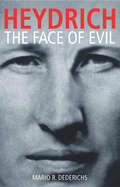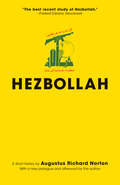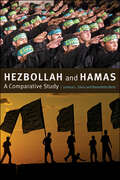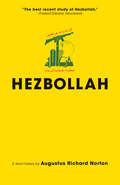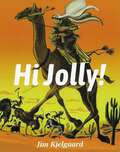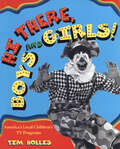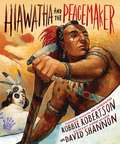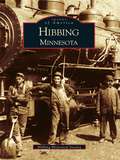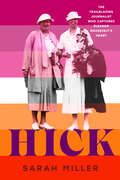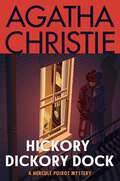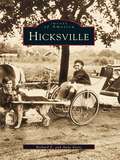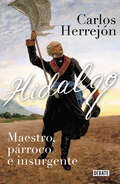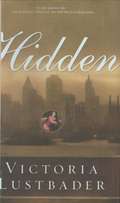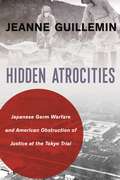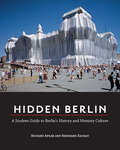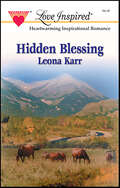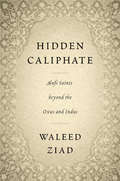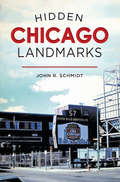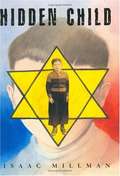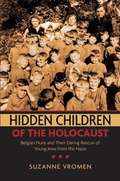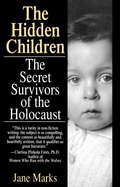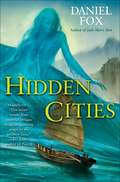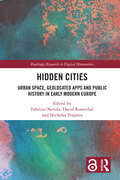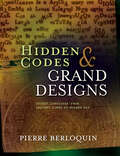- Table View
- List View
Heydrich: The Face of Evil
by Mario R. Dederichs"A chilling study of the man who masterminded the Holocaust…Heydrich was inhumanely cruel, ruthless, devious, shameless, a sixteen hour a day workaholic who was feared and loathed even by his closest colleagues.' — The Daily Telegraph ‘An impressive mix of psychological analysis, biography and historical reporting...Dederichs descends into Heydrich's personal abyss and describes it in a captivating and intelligible manner while not rejecting the scientific approach.’ – Die Rheinische Adolph Hitler praised Heydrich as 'the man with the iron heart'. He admired Heydrich so much that, despite rumors about Jewish ancestry, he considered him a potential successor. Reinhard Heydrich was undeniably one of the Führer's most enthusiastic, brutal and ambitious henchmen and one of the key architects of the Third Reich's horrific genocide. He quickly rose through the ranks of the Nazi party and became one of the key architects of the Third Reich's horrific genocide. Indeed, after his 1942 assassination, the murder of more than 2 million people at Belzec, Sobibor and Treblina was code-named 'Action Reinhard'. In this critically-acclaimed biography, which includes interviews with some of his surviving family, Mario Dederichs creates a complete and compelling portrait of Heydrich's life. Dederichs details his short-lived naval career, to his work under the SS chief Himmler, his appointment as Stellvertretender Reichsprotektor of Bohemia and Moravia, and his assassination by Czech agents and the terrible reprisals exacted on the town of Lidice.
Hezbollah
by Augustus Richard NortonMost policymakers in the United States and Israel have it wrong: Hezbollah isn't a simple terrorist organization--nor is it likely to disappear any time soon. Following Israel's war against Hezbollah in the summer of 2006, the Shi'i group--a hybrid of militia, political party, and social services and public works provider--remains very popular in the Middle East. After Lebanon tottered close to disaster, Hezbollah and its allies gained renewed political power in Beirut. The most lucid, informed, and balanced analysis of the group yet written, Hezbollah is essential reading for anyone who wants to understand the Middle East. A new afterword brings readers up to date on Hezbollah's most recent actions.
Hezbollah and Hamas: A Comparative Study
by Benedetta Berti Joshua L. GleisA concise yet comprehensive overview of Hamas and Hezbollah.Hezbollah and Hamas are major players in Middle Eastern politics and have a growing involvement in global events. Despite their strikingly different beginnings, they share a common denominator—an adversary in Israel. Hezbollah and Hamas draws from primary interviews and documents coupled with a thorough review of current scholarship. This is a portrait of the organizations’ roots, histories, ideologies, relationships, tactics, political outlooks, and futures. Joshua L. Gleis and Benedetta Berti present organization charts, maps, and a case study of the TriBorder Area in South America, which frequently serves as an operational center for terrorist groups. Recognizing that these two groups are increasingly relevant to U.S. national security, Gleis and Berti provide a comparative analysis of their histories and political missions that moves beyond reductionist portrayals of the organizations' military operations.
Hezbollah: A Short History | Updated and Expanded Third Edition (Princeton Studies in Muslim Politics #69)
by Augustus Richard NortonWith Hezbollah's entry into the Lebanese government in 2009 and forceful intervention in the Syrian civil war, the potent Shi‘i political and military organization continues to play an enormous role in the Middle East. A hybrid of militia, political party, and social services and public works provider, the group is the most powerful player in Lebanon. Policymakers in the United States and Israel usually denounce Hezbollah as a dangerous terrorist organization and refuse to engage with it, yet even its adversaries need to contend with its durability and resilient popular support. Augustus Richard Norton’s incisive account stands as the most lucid, informed, and balanced analysis of Hezbollah yet written--and this fully revised and updated edition features a new prologue and conclusion, as well as two new chapters largely devoted to the group’s recent activities, including its involvement in Syria. Hezbollah is a work of perennial importance and remains essential reading for anyone who wants to understand the Middle East.
Hi Hitler!
by Gavriel D. RosenfeldThe Third Reich's legacy is in flux. For much of the post-war period, the Nazi era has been viewed moralistically as an exceptional period of history intrinsically different from all others. Since the turn of the millennium, however, this view has been challenged by a powerful wave of normalization. Gavriel D. Rosenfeld charts this important international trend by examining the shifting representation of the Nazi past in contemporary western intellectual and cultural life. Focusing on works of historical scholarship, popular novels, counterfactual histories, feature films, and Internet websites, he identifies notable changes in the depiction of the Second World War, the Holocaust, and the figure of Adolf Hitler himself. By exploring the origins of these works and assessing the controversies they have sparked in the United States and Europe, Hi Hitler! offers a fascinating and timely analysis of the shifting status of the Nazi past in western memory.
Hi Jolly!
by Jim KjelgaardJim Kjelgaard always tells a good story outstandingly well. He has an unusual subject in Hi Jolly-the little-known Camel Corps that did so much to open up our great Southwest. In particular, it is the thrilling tale of Hadji Ali (Americanized into Hi Jolly), the fugitive young Syrian camel driver who sought refuge in America with his loyal companion, Ben Akbar, the magnificent riding camel, to help survey a wagon road across the desert land between Fort Defiance and the California border, bridging the final gap in a transcontinental highway. Jim Kjelgaard did on-the-spot research for his fascinating book, discovering the grave of the real Hi Jolly in Quartzite and "visiting every place in the Southwest where there'd ever been a camel or even a rumor of a camel." Kendall Rossi's fine drawings bring out the excitement, humor and touching quality of this fine book to perfection.
Hi There, Boys and Girls!: America's Local Children's TV Programs
by Tim HollisWhatever happened to Bozo the Clown, to Aunt Norma, to Solomon C. Whiskers, those television celebrities who hammed it up between cartoons and contests during local kids' shows? In Hi There, Boys and Girls! America's Local Children's TV Programs, Tim Hollis tracks down the story of every known local children's TV show from markets across the United States. There have been many books about children's television on the networks, and such shows as Captain Kangaroo, Howdy Doody, and Sesame Street are legends in broadcasting. However, the local branch of children's programming has received much less attention. For every performer on the scale of a Captain Kangaroo or a Buffalo Bob, there were five or six local personalities who were just as beloved by their viewers--and sometimes even more so--since these local stars could be counted on for appearances at stores, children's hospitals, and shopping centers, where kids could meet them face-to-face. Anyone over the age of thirty who grew up with a TV set will remember at least one or two of these productions. Whether it was hosted by a cowboy character, a clown such as the one on the many-franchised Bozo shows, a policeman, a sea captain who showed Popeye cartoons, or one of the gentle and lovely ladies who presided over Romper Room, these hometown stars were some of the Baby Boomers' first friends. Although children loved them, these hard-working performers garnered less respect from the rest of the TV industry. Hi There, Boys and Girls! includes a capsule history of this programming from the earliest days of radio to the early 1970s, when a combination of social changes and broadcast regulations sent most of the hosts into retirement. Walt Disney once observed that while there is very little adult in a child, there is a lot of child in every adult. This book will bring back a flood of long-submerged memories for anyone who was a child during this golden era.
Hiawatha and the Peacemaker
by David Shannon Robbie RobertsonBorn of Mohawk and Cayuga descent, musical icon Robbie Robertson learned the story of Hiawatha and his spiritual guide, the Peacemaker, as part of the Iroquois oral tradition. Now he shares the same gift of storytelling with a new generation.<P><P> Hiawatha was a strong and articulate Mohawk who was chosen to translate the Peacemaker’s message of unity for the five warring Iroquois nations during the 14th century. This message not only succeeded in uniting the tribes but also forever changed how the Iroquois governed themselves—a blueprint for democracy that would later inspire the authors of the U.S. Constitution.
Hibbing, Minnesota
by Hibbing Historical SocietySurrounded by large stands of virgin white and red pines, an enterprising iron prospector named Frank Hibbing set up camp on a bitterly cold day in January of 1892. When he awoke the next day, he insisted that there was iron beneath him-he could "feel it in his bones." He staked his claim near that campsite, and after digging several test pits, one of the world's richest deposits of iron ore was found.Beginning as a small collection of tents and log cabins, the Village of Hibbing was incorporated in August of 1893. It became one of the largest of the mining towns along the Mesabi Range, attracting immigrants of many backgrounds such as Finnish, Italian, Slavic, Swedish, and Greek. This mixture of diverse backgrounds gave Hibbing a unique culture that remains evident today. From Minnesota's famous dual in 1910 between friends Sam Kacich and Pete Radovich, to the relocation of the entire village in the 1920s, Hibbing, Minnesota takes us back in time to the days of pioneers, horse-drawn carriages, and a love of the land that has been passed on from generation to generation.
Hick: The trailblazing journalist who captured Eleanor Roosevelt's heart
by Sarah MillerIn this riveting YA non-fiction set against the backdrop of the Great Depression, trace Lorena Hickok--or Hick's-- rise from devastating childhood to renowned journalist, and watch as she forms the most significant friendship and romantic relationship of her life with first lady, Eleanor Roosevelt.Lorena Hickok came from nothing. She was on her own from the age of 14, cooking and scrubbing for one family after another as she struggled to finish school. But the girl who secretly longed for affection discovered she had a talent with words.That talent allowed Hick to carve out a place for herself in the male-dominated newsrooms of the Midwest where she earned bylines on everything from football to opera to politics. By age 35 she&’d become one of the Associated Press&’s top reporters.At the moment her career was taking off, Hick was assigned to cover Eleanor Roosevelt during FDR&’s presidential campaign. By the close of 1932, Hick was head over heels in love with the wife of the president-elect. And her life would never be the same.Acclaimed author Sarah Miller read the 3500 letters that exist between Lorena Hickock and Eleanor Roosevelt to reconstruct their friendship and love, and bring Hick's story to a new generation.
Hickory Dickory Dock: A Hercule Poirot Mystery: The Official Authorized Edition (Hercule Poirot Mysteries #30)
by Agatha ChristieA most unusual series of crimes at a student hostel intrigues Inspector Hercule Poirot in Agatha Christie’s Hickory Dickory Dock, especially when a simple case of kleptomania paves the way to murder.Hercule Poirot doesn’t need all his detective skills to realize something is troubling his secretary, Miss Lemon—she has made three mistakes in a simple letter. It seems an outbreak of kleptomania at the student hostel in which her sister works is distracting his usually efficient assistant.Deciding that desperate times call for desperate measures, the great detective agrees to investigate. Unknown to Poirot, however, desperation is a motive he shares with a killer. . . .
Hicksville
by Anne Evers Richard E. EversWith Hicksville, local historians Richard and Anne Evers take us on a journey back in time from the area's 1648 land purchase from Native Americans and associations with Elias Hicks, the Jericho antislavery leader, to its transformation into a thriving twentieth-century Long Island suburb of New York City. Through evocative images and insightful text, we learn how the Long Island Railroad was dead-ended here in the Panic of 1837 and how German immigrants created a village and vacation spa in the area. Readers fly with the Lone Eagle as he coaches his wife, Anne Morrow Lindbergh, to make good landings at the Long Island Aviation Country Club. We glimpse singer and songwriter Billy Joel learning his craft as a young Hicksville piano man. At General Instrument we watch as workers win a Navy E award for developing technology to guide the Polaris missiles on our Cold War submarines. Home to goldbeaters, a Heinz pickle works, the famous Long Island potato, and epoch-making Levitt-type homes near Grumman's (whose naval aircraft won the Pacific War), Hicksville has made large contributions to the nation's social, economic, and political sectors.
Hidalgo: Maestro, párroco e insurgente
by Carlos HerrejónDe joven prodigio a desastre militar. De bon vivant a encadenado. De rector a seductor de masas. De párroco celoso a excomulgado. Y —ahora, 200 años después— de héroe mítico a hombre de carne y hueso. Al señor Miguel Gregorio Antonio Ignacio Hidalgo y Costilla Gallaga Mandarte y Villaseñor le bastaron seis meses para convertirse en el mayor héroe de la historia nacional: fue capturado tan sólo medio año después de haber dado el Grito de Dolores. Desde su fusilamiento, su leyenda no ha hecho más que aumentar. Pero los «altares civiles» y los monumentos han ocultado toda la complejidad de un ser humano fascinante. ¿Qué pasó durante los 57 años que antecedieron al Grito? ¿Cómo fue que el joven violinista y luego cura alfarero llegó a liderar un ejército de 80 mil hombres? ¿Cómo pasó de hablar otomí, francés, latín y español a balbucear el lenguaje de la revolución? ¿Por qué su mayor aliado -Allende- quiso matarlo? ¿Cómo fueron los dos juicios que lo llevaron a la degradación y al fusilamiento? En esta magna obra ilustrada, el doctor Carlos Herrejón -tal vez el mayor especialista en Hidalgo- nos presenta la biografía más acuciosa que se haya hecho del guanajuatense. Mientras pinta cómo era la vida en la Nueva España, disecciona los años de formación y los de esplendor académico y clerical de Hidalgo, igual que los meses de guerra y prisión. Nos muestra, en fin, que el Padre de la Patria es un gran desconocido para sus hijos. miguel hidalgo y costilla;josemaria morelos y pavon;mexico;independencia; nueva españa; corralejo; penjamo;insurgentes, insurgencia;historiade mexico; historia; historia mexicana; hidalgo;allende;miguel allende; Abasolo;la corregidora; josefa ortiz de dominguez; abad y queipo;grito de dolores; España;virreinato;colonia; colonialismo;estandarte;virgende guadalupe;morelia;Valladolid;guayangareo;vicente guerrero;Iturbide; agustin de iturbide;mina;sentimientos de la nacion;juan o’donoju;guanajuato; michoacan;apatzingan;charo;colegio de san nicolas; umsnh;universidad michoacana de san nicolasde hidalgo;criollo;mestizaje;ejército trigarante;napoleon; napoleon iii;felipe vii; guerra de independencia; alhondiga; alhóndiga de granaditas; cerro de las cruces; Riaño; ignacio lopez rayon [Críticas/Reseñas]
Hidden
by Victoria LustbaderThe battlefield traumas of the Great War cement an improbable friendship between Jed Gates, scion of the wealthy Gates family, and David Warshinsky, first-generation American from New York's poverty-ridden lower East Side. David sacrifices his family and his Jewish heritage to his untamable ambition. Jed sacrifices his private desires to assume the burdens of familial expectations. Davids sister Sarah suffers the torments of a tenement sweatshop, while Jed's sister Lucy becomes a nurse in Margaret Sanger's revolutionary birth control clinic. Both find love in unexpected places. David's mother Anna loses her struggle to preserve her shattered family. And wealth cannot protect Jed's aunt Zoe from the violent abuses of her alcoholic husband, or his artist father Philip from the pain of his wife's rejection. A novel that is both panoramic and intimate, Hidden teems with complex characters readers will embrace. Concealing their passions and innermost thoughts even from those they love most dearly, the Warshinskys and Gateses love, lust, seize power, and strive during a decade of turmoil at home and abroad. Hidden is the powerful debut of a talented new writer.
Hidden Atrocities: Japanese Germ Warfare and American Obstruction of Justice at the Tokyo Trial (A Nancy Bernkopf Tucker and Warren I. Cohen Book on American–East Asian Relations)
by Jeanne GuilleminIn the aftermath of World War II, the Allied intent to bring Axis crimes to light led to both the Nuremberg trials and their counterpart in Tokyo, the International Military Tribunal of the Far East. Yet the Tokyo Trial failed to prosecute imperial Japanese leaders for the worst of war crimes: inhumane medical experimentation, including vivisection and open-air pathogen and chemical tests, which rivaled Nazi atrocities, as well as mass attacks using plague, anthrax, and cholera that killed thousands of Chinese civilians. In Hidden Atrocities, Jeanne Guillemin goes behind the scenes at the trial to reveal the American obstruction that denied justice to Japan’s victims.Responsibility for Japan’s secret germ-warfare program, organized as Unit 731 in Harbin, China, extended to top government leaders and many respected scientists, all of whom escaped indictment. Instead, motivated by early Cold War tensions, U.S. military intelligence in Tokyo insinuated itself into the Tokyo Trial by blocking prosecution access to key witnesses and then classifying incriminating documents. Washington decision makers, supported by the American occupation leader, General Douglas MacArthur, sought to acquire Japan’s biological-warfare expertise to gain an advantage over the Soviet Union, suspected of developing both biological and nuclear weapons. Ultimately, U.S. national-security goals left the victims of Unit 731 without vindication. Decades later, evidence of the Unit 731 atrocities still troubles relations between China and Japan. Guillemin’s vivid account of the cover-up at the Tokyo Trial shows how without guarantees of transparency, power politics can jeopardize international justice, with persistent consequences.
Hidden Berlin: A Student Guide to Berlin's History and Memory Culture
by Reinhard Zachau Dr. Richard ApgarHidden Berlin brings to life the city's tumultuous history by tracing the evolution of six iconic locations: the reconstructed City Palace, the Berlin Wall, the Nazi Olympic Stadium, Potsdamer Platz, the Brandenburg Gate, and the recreated Nikolaiviertel. In exploring each of these areas, Hidden Berlin illustrates how Berlin has become one of Europe's most complex and dynamic cities.Richly illustrated with images and maps, the volume engages readers through detailed timelines and activities. Additional locations of interest and a bibliography present opportunities for readers to explore on their own. A companion website provides a host of internet-based activities, suggestions for readings, and supplementary resources for each chapter: www.hiddenberlinbook.wordpress.com.Hidden Berlin is an engaging volume for courses on the culture of Berlin or modern Germany, students studying abroad, and visitors to the city who want an enlightened experience.
Hidden Blessing
by Leona KarrREDEEMING SHANNON...The last thing Shannon Hensley expected when she rented a summer cottage was to be confronted with a life-threatening forest fire. Used to being in control in the high-powered corporate world, she’d come to the small Colorado town to find herself. Instead she found herself stranded on Ward Dawson’s ranch with his adorable daughter. And wondering what message God was trying to send her....Ward Dawson didn’t know what the emptiness in Shannon’s life might be, but he found himself powerless to resist this strong-willed beauty. Now he prayed that Shannon would find her way back to God...and see the bright future he’d planned for them together!
Hidden Caliphate: Sufi Saints beyond the Oxus and Indus
by Waleed ZiadSufis created the most extensive Muslim revivalist network in Asia before the twentieth century, generating a vibrant Persianate literary, intellectual, and spiritual culture while tying together a politically fractured world. In a pathbreaking work combining social history, religious studies, and anthropology, Waleed Ziad examines the development across Asia of Muslim revivalist networks from the eighteenth to the twentieth centuries. At the center of the story are the Naqshbandi-Mujaddidi Sufis, who inspired major reformist movements and articulated effective social responses to the fracturing of Muslim political power amid European colonialism. In a time of political upheaval, the Mujaddidis fused Persian, Arabic, Turkic, and Indic literary traditions, mystical virtuosity, popular religious practices, and urban scholasticism in a unified yet flexible expression of Islam. The Mujaddidi “Hidden Caliphate,” as it was known, brought cohesion to diverse Muslim communities from Delhi through Peshawar to the steppes of Central Asia. And the legacy of Mujaddidi Sufis continues to shape the Muslim world, as their institutional structures, pedagogies, and critiques have worked their way into leading social movements from Turkey to Indonesia, and among the Muslims of China. By shifting attention away from court politics, colonial actors, and the standard narrative of the “Great Game,” Ziad offers a new vision of Islamic sovereignty. At the same time, he demonstrates the pivotal place of the Afghan Empire in sustaining this vast inter-Asian web of scholastic and economic exchange. Based on extensive fieldwork across Afghanistan, Uzbekistan, and Pakistan at madrasas, Sufi monasteries, private libraries, and archives, Hidden Caliphate reveals the long-term influence of Mujaddidi reform and revival in the eastern Muslim world, bringing together seemingly disparate social, political, and intellectual currents from the Indian Ocean to Siberia.
Hidden Chicago Landmarks (Hidden History)
by John R. SchmidtTake in the sights of Chicago's forgotten byways, including a cow trail through a downtown hotel. Pause reflectively at the cemetery in a working scrapyard and the church built without a nail. Stop by the one-time homes of Walt Disney, Joe Louis, Hillary Clinton and Al Capone. Along the way, greet forgotten Chicago notables like the vice president who won a Nobel Prize and wrote a number-one pop hit. From the shortest street to the oldest house, John R. Schmidt visits the sites of Chicago's neglected history.
Hidden Child
by Isaac MillmanIsaac was seven when the Germans invaded France and his life changed forever. <P><P>First his father was taken away, and then, two years later, Isaac and his mother were arrested. Hoping to save Isaac’s life, his mother bribed a guard to take him to safety at a nearby hospital, where he and many other children pretended to be sick, with help from the doctors and nurses. <P><P> But this proved a temporary haven. As Isaac was shuttled from city to countryside, experiencing the kindness of strangers, and sometimes their cruelty, he had to shed his Jewish identity to become Jean Devolder. But he never forgot who he really was, and he held on to the hope that after the war he would be reunited with his parents. <P><P> After more than fifty years of keeping his story to himself, Isaac Millman has broken his silence to tell it in spare prose, vivid composite paintings, and family photos that survived the war.
Hidden Children Of The Holocaust: Belgian Nuns And Their Daring Rescue Of Young Jews From The Nazis
by Suzanne VromenIn the terrifying summer of 1942 in Belgium, when the Nazis began the brutal roundup of Jewish families, parents searched desperately for safe haven for their children. As Suzanne Vromen reveals in Hidden Children of the Holocaust , these children found sanctuary with other families and schools-but especially in Roman Catholic convents and orphanages. Vromen has interviewed not only those who were hidden as children, but also the Christian women who rescued them, and the nuns who gave the children shelter, all of whose voices are heard in this powerfully moving book. Indeed, here are numerous first-hand memoirs of life in a wartime convent-the secrecy, the humor, the admiration, the anger, the deprivation, the cruelty, and the kindness-all with the backdrop of the terror of the Nazi occupation. We read the stories of the women of the Resistance who risked their lives in placing Jewish children in the care of the Church, and of the Mothers Superior and nuns who sheltered these children and hid their identity from the authorities. Perhaps most riveting are the stories told by the children themselves-abruptly separated from distraught parents and given new names, the children were brought to the convents with a sense of urgency, sometimes under the cover of darkness. They were plunged into a new life, different from anything they had ever known, and expected to adapt seamlessly. Vromen shows that some adapted so well that they converted to Catholicism, at times to fit in amid the daily prayers and rituals, but often because the Church appealed to them. Vromen also examines their lives after the war, how they faced the devastating loss of parents to the Holocaust, struggled to regain their identities and sought to memorialize those who saved them.
Hidden Children: The Secret Survivors of the Holocaust
by Jane MarksThey hid wherever they could for as long as it took the Allies to win the war -- Jewish children, frightened, alone, often separated from their families. For months, even years, they faced the constant danger of discovery, fabricating new identities at a young age, sacrificing their childhoods to save their lives. These secret survivors have suppressed these painful memories for decades. Now, in The Hidden Children, twenty-three adult survivors share their moving wartime experiences -- some for the first time.There is Rosa, who hid in an impoverished one-room farmhouse with three others, sleeping on a clay pallet behind a stove; Renee, who posed as a Catholic and was kept in a convent by nuns who knew her secret; and Richard, who lived in a closet with his family for thirteen months. Their personal stories of belief and determination give a voice, at last, to the forgotten. Inspiring and life-affirming, The Hidden Children is an unparalleled document of witness, discovery, and the miracle of human courage.
Hidden Cities (Moshui #3)
by Daniel FoxThe mythic beasts and glorious legends of feudal China illuminate a world at war in this, the conclusion to Daniel Fox's critically acclaimed series. Whatever they thought, this was always where they were going: to the belly of the dragon, or the belly of the sea. More by chance than good judgment, the young emperor has won his first battle. The rebels have retreated from the coastal city of Santung--but they'll be back. Distracted by his pregnant concubine, the emperor sends a distrusted aide, Ping Wen, to govern Santung in his place. There, the treacherous general will discover the healer Tien, who is obsessed with a library of sacred mage texts and the secrets concealed within--secrets upon which, Ping Wen quickly realizes, the fate of the whole war may turn. As all sides of this seething conflict prepare for more butchery, a miner of magical jade, himself invulnerable, desperately tries to save his beautiful and yet brutally scarred clan cousin; a priestess loses her children, who are taken as pawns in a contest beyond her comprehension; and a fierce and powerful woman commits an act of violence that will entwine her, body and soul, with the spirit of jade itself. Amid a horde of soldiers, torturers, and runaways, these people will test both their human and mystical powers against a violent world. But one force trumps all: the huge, hungry, wrathful dragon.From the Trade Paperback edition.
Hidden Cities: Urban Space, Geolocated Apps and Public History in Early Modern Europe
by David Rosenthal Nicholas Terpstra Fabrizio NevolaThis groundbreaking collection explores the convergence of the spatial and digital turns through a suite of smartphone apps (Hidden Cities) that present research-led itineraries in early modern cities as public history. The Hidden Cities apps have expanded from an initial case example of Renaissance Florence to a further five historic European cities. This collection considers how the medium structures new methodologies for site-based historical research, while also providing a platform for public history experiences that go beyond typical heritage priorities. It also presents guidelines for user experience design that reconciles the interests of researchers and end users. A central section of the volume presents the underpinning original scholarship that shapes the locative app trails, illustrating how historical research can be translated into public-facing work. The final section examines how history, delivered in the format of geolocated apps, offers new opportunities for collaboration and innovation: from the creation of museums without walls, connecting objects in collections to their original settings, to informing decision-making in city tourism management. Hidden Cities is a valuable resource for upper-level undergraduates, postgraduates, and scholars across a variety of disciplines including urban history, public history, museum studies, art and architecture, and digital humanities.
Hidden Codes & Grand Designs: Secret Languages from Ancient Times to Modern Day
by Pierre BerloquinDid the Masons encode messages in walls—and even in the street plan of Washington, D.C.? Does the Hebrew Bible conceal hidden mysteries? Ingenious methods for encoding secrets have taken many amazing turns through the ages, from the military signals the Romans flashed from hilltop to hilltop, to the computer codes that guard your cash at the ATM. Pierre Berloquin, one of France’s leading puzzle book authors, takes you on a tour of them all in a book full of astonishing historical insights. With more than 150 brain-teasing problems for readers to solve for themselves, this is a journey beyond the gee-whiz and deep into the how-to of codes, ciphers, and other secret communication systems.
